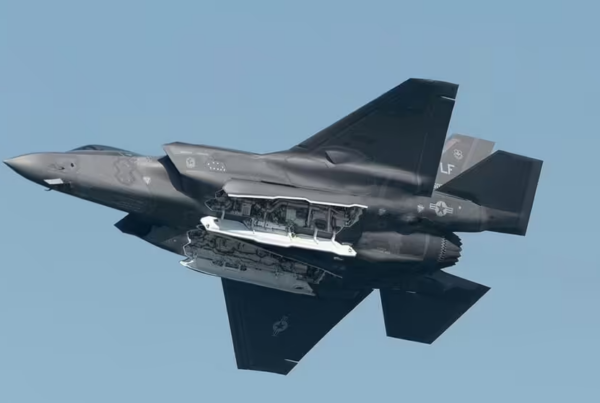Good news seems so rare these days, but there is some coming out of the Indian Ocean. Unfortunately, it is not as good as it should be.
Pirates based out of Somalia (and apparently bankrolled by interests in Yemen) have achieved the following in recent years in the Red Sea, Gulf of Aden and the Indian Ocean:
2008: 47 large vessels were attacked, 34 of which were captured (although none of the three cruise ships that were attacked were taken); eight smaller vessels – yachts, fishing ships and tugs – were also attacked and all were captured.
2009: 60 large vessels were attacked, but interventions by various navies kept the number of captures down to 29. 15 smaller vessels were attacked and 14 were taken.
2010: 42 larger vessels were attacked (including three naval vessels – nobody seems to have thought to have given the pirates copies of Jane’s Recognition Guides), and 31 were taken. Six smaller vessels were attacked and all were taken.
2011 – 1st Quarter: 14 larger vessels were attacked, and nine were taken, two smaller vessels were attacked and taken.
2011 – 2nd Quarter: Four larger vessels were attacked (one a Danish naval vessel), two were taken.
2011 – 3rd Quarter: Three larger vessels were attacked, one was taken. One smaller vessel was attacked and taken,
2011– 4th Quarter: One Taiwanese fishing vessel was attacked and captured, then the crew rallied and tossed the pirates over the side.
2012 —1st Quarter: Five larger vessels were attacked, and three were taken (though one was later freed by Iranian commandos); one smaller vessel was taken.
This, however, does not mean the end of piracy out of Somalia. Rather, what it represents is the growing effectiveness of anti-piracy measures in the Gulf of Aden and the mouth of the Red Sea. The pirates are striking further afield from their old hunting grounds, including hanging around off the coast of India, or off the Seychelles Islands, as well as seeking to enter the Arabian Sea at the mouth of the Persian Gulf. However, given that some 50% of the world’s shipping passes through the Red Sea and past their homeland, there are no waters with such an abundance of prey as there are off their own shores.
There are some simple centuries old home-truths about piracy. Understanding them should have been second nature when piracy from Somalia began in earnest in 2006-7.
First, piracy always begins with petty theft at sea and only works up to the capture of large vessels in an absence of enforcement. Very few classic 17th Century pirates started off with fully armed warships capable of tackling gold-stuffed galleons. Usually, they began with small boats and mugged fishermen for pocket change before working up to bigger things. The piracy originating from Somalia began with the collapse of order in the first Somalia Civil War (more like the first utter Somalia Anarchy) in the early 1990s, but the capture of entire merchant vessels and holding them for ransom only really got underway after 2006. It took a couple of years before the world’s navies started to show up and the Maritime Security Patrol Area (MSPA) was established to provide a safer shipping corridor.
Secondly, for piracy to succeed, it must be profitable. Piracy is, of course, an organized criminal enterprise. In the Somalia case, the ransom of captured ships, crews and cargoes grew enormously, and amounted to over $200 Million in 2010. Overall income for 2011 is much reduced and should be true again for 2012.In truth, there are ways of making piracy unprofitable. One can’t spend what one hasn’t earned (a rule that is finally dawning on many governments again). Also, there is no profit in being dead. Casualties among pirates have climbed enormously, even if some navies are being close-mouthed about what they’ve been doing. Even so, a successful Somali pirate can earn as much in a good cruise as he might in fifty years of more legitimate work at Somalia’s wages.
The third rule is connected to the third eternal verity about piracy. Despite movies and Howard Pyle illustrations, pirates tend to see little of the money their activities earn. The real profitability in piracy is to underwrite them. The pirates often dump their small arms over the side if confronted by naval forces, and more than a few of their speedboats and mother ships have been sunk. In short, they often need to be re-equipped and financed. There has been evidence that brokers in Yemen, Dubai and elsewhere are doing this in exchange for a lion’s share of the profits. Action against these sponsors is long overdue.
If the sponsors of pirates are being hit financially at both ends, the need to refit pirates more often and to fend off legal inquiries will diminish the profit incentive.
The fourth eternal concern is traditional quasi-legalism. Historically, pirates often began as privateers during the cyclical wars of the great European powers. When England, France and Spain began one of their usual rounds of war (usually about every 15 years or so), a host of sea-going riff-raff would be able to acquire Letters of Marque and could then interest investors in outfitting a vessel to go out and raid enemy commerce as licenced privateers. Peace inevitably spoiled the business model. Some privateers then turned pirate while others looked for some other government that was still at war and tried to get their licences updated.
The pirates of Somalia might not be that good at telling naval vessels from merchant ships (they have attacked naval vessels in error on at least four occasions), but they do know how to spin a yarn as well as any pirate stepping out of the pages of Treasure Island or some Howard Pyle illustration. At various times, and with some justification, the pirates have been described as Somali fishermen taking action against foreign fishing in Somali waters or against the illegal dumping of toxic waste in the same. Both problems are real but neither excuses wholesale robbery at sea. Be sure that the Pirates of Somalia will sometimes describe themselves as a ‘Coast Guard’.
Piracy will attract others; al Qaeda and its Somali Proxy al Shabaab have been sniffing around the piracy issue and are looking to get involved. They have been said to have made bids for captured crews and yacht owners from their pirate captors and have been offering better arms and technical support (one sample of Pirates’ technical skills is the ability to read a GPS set , which does come in handy out in mid-ocean). It is also interesting to recall that al Qaeda , despite its diminished resources in recent years, has been pumping arms, money and manpower into both al Shabaab and al Qaeda in the Arabian Peninsula and AQAP in Yemen; so controlling the exits of the Red Sea would seem to be a priority to them. Al Qaeda has betrayed an interest in attacking supertankers and cruise-liners before.
In April 2009, the Russian Udaloy Class Destroyer Admiral Pantelyev (DDG 548) was one of the first Russian vessels to join the anti-Piracy patrols off the coast of Somalia. According to a widespread You-Tube video posted of their capture of 29 pirates on a mother ship, they had found Pakistanis and an Iranian mixed up with the Somalis. The Russians treated the pirates with all the courtesy and kindliness we have come to expect from them when handling insurgents, and the comments overhead on the video soundtrack suggest the pirates were left trussed up aboard their mother ship when the Russians blew it up and sank it. In any event, the dress and appearance of a couple of the Pakistanis suggested they were at least partial to the Deobandi school of Islam and might be presumed to have been Jihadists. Ah well…
The Americans also proved a little careless about taking pirates prisoner in a raid on 23rd January 2012, when US Navy Seals liberated two captives in Adado, Somalia. Coming in at night, they hit when the pirates were coming off their daily Khat buzz; and killed nine of them in a highly successful raid. This contrasts with an incident in February 2011 where Somali pirates killed four US hostages before US commandos could liberate them. The US killed two pirates and took 15 prisoners… unfortunately. They also shot three pirates and took one prisoner during the Maersk Alabama incident in April 2009.
If there is one lesson from history about the successful suppression of piracy it is this: Take no prisoners for any longer than it takes to run up a noose over a yard-arm. This is how piracy was broken in the early 18th Century and the Tran-Atlantic Slave Trade was brought to an end. Using armed forces to suppress piracy, barratry and brigandage is a time-honoured tradition because it works. Kill pirates, sink their boats, and arrest their sponsors whenever possible.
Suppressing piracy is expensive – the MSPA relies on the contributions of naval and marine assets from dozens of navies (including the Royal Canadian Navy). Higher insurance premiums and placing armed security guards aboard merchant vessels in risky areas are also expensive.
The response to this piracy has been clumsy. There is a NATO taskforce, an EU taskforce (why?), and contributions from Russia, China, India and other powers. Besides the warships, more stake-holders than might be seen in a village mob storming a vampire’s castle have turned up and inserted themselves into the emerging process of handling the issue. The customary inefficiency and compromises of the global community intent on solving a problem have re-appeared yet again, inserting muddle and complexity into the process.
However, consider the costs of not suppressing piracy. If unchecked, it will be a growth industry and the pirates of Somalia will go even further afield. Moreover, piracy has shown in the last twenty years that it can resurface in the Caribbean where drug smugglers in the early 1990s made a practice of capturing yachts (and killing their owners) for smuggling. It has also resurfaced off West Africa and South East Asia. It is only a matter of time, if the pirates of Somalia are not stamped flat, that the world will soon see much more of it.
The other approach that is being considered is also expensive and has no guarantee of success. Somali piracy is born out of poverty and lawlessness. Notwithstanding the legions of lawyers and droves of diplomats who hope that – somehow — international law and legalism can trump the use of force; trials for pirates in a dozen different nations will not have much effect on stemming piracy itself.
Development in Somalia or its quasi-independent territories like Puntland, is a noble idea. However, the world sought to impose charity on the Somalis 20 years ago and look how well that turned out. In the meantime the warlords and clan chiefs are benefitting from piracy and would be in no hurry to lose their benefits even if we could demonstrate that sinking billions and billions of dollars into Somalia would improve their lot. More probably, they would take the aid and continue to sponsor piracy anyway while simultaneously ineffectually working to ‘fix’ the problem.
The sterner solution is the easiest one in the long run.








